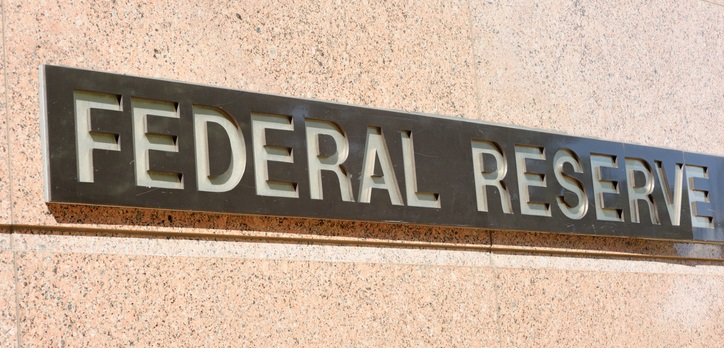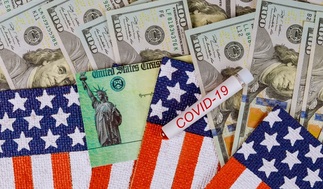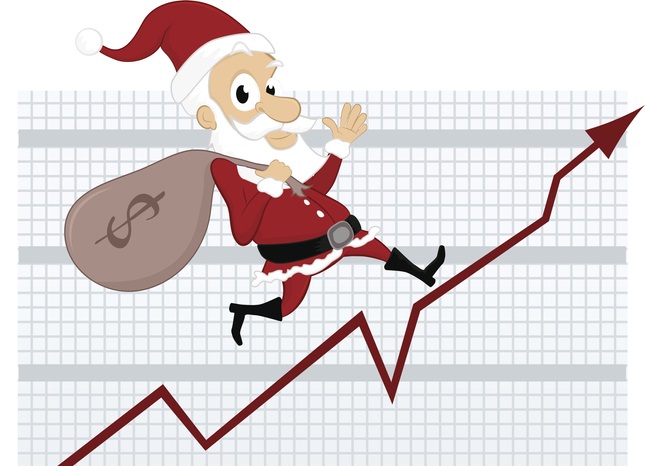Markets are in a cheery mode heading into the Thursday 17th December US equity cash open. Although the Fed did not opt to increase the monthly pace of asset purchases or tweak the composition of those asset purchases in last night’s meeting, Fed Chair Jerome Powell was keen to reassure market participants that the Fed’s ultra-accommodative monetary policy stance is not going anywhere any time soon. Meanwhile, the latest news on the Brexit front suggests the EU and UK are closing in a deal, potentially by the weekend that would avert what market participants see as a disastrous no-deal outcome at the end of the transition period on the 31st of December and US Congressional leaders seem on the brink of clinching a deal on further Covid-19 fiscal aid.
The combination of the above positives, combined with continued “vaccine optimism” as mass vaccination programmes get underway in the UK, US, and Canada (and soon hopefully the EU and other countries as well), continues to outweigh concerns regarding the near-term direction of the US and European (and other) economies as Covid-19 cases pick up; the US set a grim milestone on Wednesday of a new record daily Covid-19 death count of more than 3500. Meanwhile, as yesterday’s US Retail Sales numbers for November showed, the spread of Covid-19 is already taking a serious toll on the economy.
But “forward looking” markets do not seem overly bothered by any of this; ahead of the US cash open, S&P 500 futures trade with gains of around half a percent and are comfortably above 3710 and European equities look similarly buoyant with the Stoxx 600 up just under half a percent. Meanwhile, commodity markets are also looking perky with WTI surpassing $48.00/barrel since the 4th of March, industrial metals up and precious metals broadly bid (aided by the prospect of reassurance from the Fed of its continued dovish stance); spot gold rallied to fresh month highs above $1880/oz (and is up more than 5.5% on the month), while spot silver has continued its recent surge and surpassed $25.50 (and is now up more than 13.5% on the month). In FX markets, the safe-haven USD is under pressure and the Dollar Index (DXY) fell below 90.00 for the first time since April 2018 and is eyeing a move towards 2018 lows around 88.25 (more below).
USD and the Fed


As noted, the risk on markets mood plus reassurance from Fed Chair Powell that the bank’s ultra-accommodative stance is going nowhere is keeping the dollar bear trend intact for now. The US dollar is the underperforming G10 currency so far today and DXY is now below 90.00. US data will be in focus at 1330GMT/0830EDT but is unlikely to distract too much from the market’s broader themes. As a recap of last night’s Fed policy meeting;
- The Fed maintained the Fed Funds Rate at 0.00-0.25% and IOER at 0.10% as expected.
- The Fed extended its swap lines and repo facility for foreign and international monetary authorities through September 30th, 2021.
- The Fed maintained the pace of its asset purchase programme ($80B per month in treasuries and $40B per month in agency-backed securities) but added new guidance that stated purchases would continue at the current rate until “substantial further progress has been made on maximum employment and price stability goals”
- The Fed opted not to extend the weighted average maturity of its purchases (some had speculated that they might do this, hence the initial “hawkish” reaction to the rate decision). Some market commentators think they will wait until January to do this so that the Fed has more time to observe what happens with the pandemic and fiscal stimulus.
- The Fed’s new dot plot maintained its projection for the Fed Funds Rate to remain at 0.0-0.25%, though one FOMC member projects a rate hike in 2022 (vs none in the last dot plot) and five project a rate hike in 2023 (vs four in the last dot plot).
- In the Fed’s new economic projections, its GDP growth forecasts for 2020-2022 were upgraded, but downgraded slightly in the long run, the unemployment rate projections until 2023 were lowered and inflation forecasts lowered for 2020 but increased for 2021 and 2022.
- Fed Chair Powell said in the press conference that the Fed has the flexibility to provide more accommodation which he hinted could come via tweaks to the bank’s QE programme (as some had speculated they might do at last night’s meeting). His tone on the outlook for Fed policy over the coming years was generally dovish and triggered a dovish reversal of the initial hawkish reaction to the meeting.
GBP, Brexit, Bank of England


GBP is one of the best performing G10 currencies on Thursday, as hopes that a Brexit deal might be reached ahead of the week boost optimism. GBPUSD has crossed above the 1.3600 level for the first time since May 2018, up roughly 0.7% on the day, and EURGBP is back below 0.9000.
In terms of the latest on Brexit, EU Brexit Negotiator Michelle Barnier said this morning that there has been good progress, but the last stumbling blocks remain, and EU officials (confirming what sources earlier hinted) said that a trade deal is possible by the end of the week. Meanwhile, the European parliament has set a hard deadline of midnight on Sunday for a trade deal to be presented to them, as any later would not allow for sufficient time for ratification prior to the end of the year. This might end up being a positive for negotiations as increased time-pressure is likely to increase the pressure on the two sides to close the remaining gaps.
The Bank of England rate decision was largely ignored, as expected, with uncertainty over the future trading relationship between the UK and EU tying their hands. For reference, the bank held interest rates steady at 0.1%, left its QE programme at £845B and noted that its existing policy stance remains appropriate.
Rest of G10 FX
AUD and NZD sit alongside GBP amongst the top three best performing G10 currencies on the day, boosted as a result of their “risk-sensitive” characteristics amid the broader risk-on market feel, but also as a result of some positive domestic factors. Starting with Australia; November jobs data was out last night and was much better than expected, with the unemployment rate dropping to 6.8% (exp. 7.0%), the economy adding 90K jobs (exp. 50K) and the participation rate rising to 66.1% (exp. 66.0%). AUDUSD this morning broke above 0.7600 for the first time since June 2018.
Meanwhile, across the Tasman Sea, New Zealand Q3 GDP growth was strong at 14% QoQ (exp. 13.5%) and the New Zealand Finance Minister essentially said that the government is not worried about recent NZD appreciation (which he said reflects a better-than-expected economic recovery) but is worried about the country’s debt levels (which might lead to the government putting more pressure on the RBNZ not to facilitate excess levels of borrowing through its ultra-easy monetary policy stance). NZDUSD has advanced above the 0.7150 level for the first time since April 2018.
USD weakness is also giving EUR, CAD and even safe-haven JPY a boost; EURUSD is above 1.2200 again as traders eye Brexit developments and ECB speakers later in the afternoon and USDCAD is back at the 1.2700 level and just above multi-year lows, with both pairs also keeping an eye on incoming data.
Safe-haven JPY is outperforming its fellow FX safe-havens CHF and USD, perhaps given some bearish developments in Japan (record daily Covid-19 cases and a small earthquake this morning). The swiss franc is second from bottom spot in the G10 and only very marginally firmer against the buck following this morning’s SNB rate decision, where the bank left policy unchanged as expected (rates still at -0.75%) and urged that it would continue to intervene in FX markets despite the US’ designation of the country as an FX manipulator yesterday. USDJPY has slipped down towards 103.00 and USDCHF is subdued beneath 0.8850.
Coming Up
The main focus of the rest of the day will remain on the themes of Brexit and US fiscal stimulus and whether further progress towards deal on each can be made, but we do also have some important US data points prior to the US equity cash open, as well as some BoE and ECB speakers (see calendar below).
1330GMT/0830EDT, US Housing Data (Nov):
- Building Permits MoM prev. -0.1%
- Building Permits exp. 1.550M, prev. 1.544M
- Housing Starts MoM prev. 4.9%
- Housing Starts exp. 1.530M, prev. 1.530M
1330GMT/0830EDT, US Weekly Jobless Claims:
- Initial Jobless Claims (w/e 12th Dec) exp. 800K, prev. 853K
- Continuing Jobless Claims (w/e 5th Dec) prev. 5,757K
1330GMT/0830EDT, US Philly Fed (Dec):
- Manufacturing Index exp. 19.0, prev. 26.3
- Business Conditions prev. 44.3
- CAPEX Index prev. 25.50
- Employment prev. 27.2
- New Orders prev. 37.9
- Prices Paid prev. 38.90
1530GMT/1030EDT, Bank of England Monetary Policy Committee Member Broadbent gives a speech on COVID and its effect on spending
1600GMT/1100EDT, US Kansas City Fed (Dec):
- Composite Index prev. 11
- Manufacturing Index exp. 20, prev. 20
1600GMT/1100EDT, ECB Governing Council Member Schnabel participates in a regular exchange of views with German economists on the coronavirus (COVID-19) organised by German Ministry of Finance
1600GMT/1100EDT, ECB Governing Council Member Hernández de Cos participates in the pro-RAE Foundation meeting board
1730GMT/1200EDT, ECB Governing Council Member de Guindos participates in the pre-recorded launch event of the book “The Economics of Monetary Unions – past experiences and the Eurozone” edited by Juan E. Castaneda, Alessandro Roselli and Geoffrey E.Wood
2145GMT/1845EDT, New Zealand Trade Numbers (Nov) (NZD):
- Exports prev. 4.78B
- Imports prev. 5.29B
- Trade Balance MoM exp. 250M, prev. -1M, YoY prev. 2,190M
2330GMT/1830EDT, Japan Inflation (Nov):
- CPI Nationwide prev. -0.4%
- CPI Core Nationwide exp. -0.9%, prev. -0.7%




